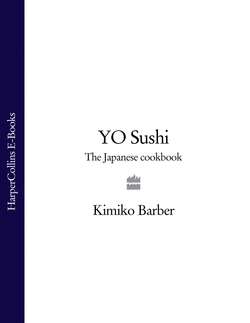Читать книгу YO Sushi: The Japanese Cookbook - Kimiko Barber - Страница 27
how to cook noodles
ОглавлениеNoodles are very popular in Japan. Japanese people regularly eat huge quantities of soba, udon, somen and ramen, both at home and in noodle shops, at any time of the day or year. Whatever the size of the serving, noodles are never considered more than a quick bite or part of a main meal. In fact, noodles make an ideal snack as they are quick and easy to prepare, highly versatile, instantly satisfying and very digestible.
Dried and semi-dried noodles in vacuum packs are now widely available outside Japan, so are good store-cupboard standbys. Dried noodles tend to come in bundles neatly tied with paper ribbons making it easy to estimate serving portions. The Japanese prefer their noodles to have koshi, which literally means ‘a hip’, although in a culinary context it means having a good texture – just as the Italians like their pasta al dente (tender with just a little bite). Unlike pasta, however, noodles have to be cooked through to the centre, but the outside must not become sticky and soft. Noodles cannot be cooked in advance – they have to be eaten straight away otherwise they become soggy. Compared to pasta, noodles take almost no time to cook, so you must have everything else ready before you start. The following method will give you successful results every time.
Bring a large saucepan of water to a rolling boil over a medium to high heat. Untie the ribbons, if the noodles are tied, and drop in the noodles, giving them a quick stir with a chopstick to separate them. Stand by with half a glass of cold water and watch the pan. As soon as the cooking water begins to rise and is about to boil over, pour in the cold water. This will reduce the temperature of the cooking water so that the middle of each noodle cooks at the same speed as the outside. Depending on the thickness and dryness of the noodles, you may have to repeat this.
To test if the noodles are done, lift out a strand and take a bite. Ideally the noodle will be tender all the way through, with no hard core, and the outside will be slippery without being too soggy. If you are making a large quantity, cook the noodles in batches and use a sieve or strainer to scoop out cooked noodles so you don’t have to pour away the cooking water. Whether serving noodles hot or cold, the Japanese rinse their noodles under cold running water to wash off the surface starch and then drain them well.
